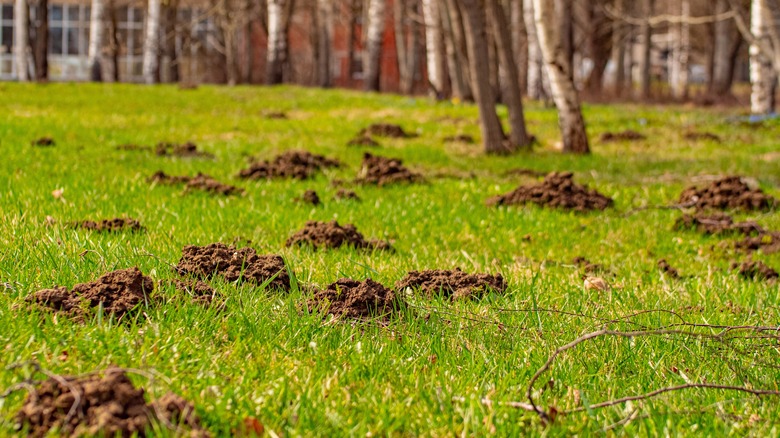If you’re dealing with a mole infestation, you might have come across an interesting suggestion of using citrus peels, which is recommended by various sources. Apparently, by placing the peels from lemons inside mole tunnels, you can effectively deter these pesky invaders from your garden. Lime, another citrusy contender, is often recommended as a natural mole repellent. Its strong scent is believed to be an anathema to these creatures, keeping them from digging up your yard. The rationale behind this method hinges on the belief that moles, with their keen sense of smell, find the intense citrus aroma particularly off-putting.
However, it’s crucial to approach these methods with a healthy dose of skepticism. Much of the evidence supporting the use of citrus peels as mole deterrents is anecdotal. Scientific studies that back up these claims are limited. In the face of a mole invasion, desperation might lead you to try various remedies, but remember: the damage moles cause can be significant. Relying on unproven methods might only result in lost time and effort. Effective mole deterrence often requires a more holistic approach, including various additional humane methods for mole control. Deterring moles requires a deeper dive into their lives — their tunneling patterns, their daily routines, and their breeding habits. You’ll understand why citrus peels alone might not be the magic bullet for your mole problem.
Understanding moles: habits and behavior

Simply placing citrus peels in tunnels without considering the moles’ habits and lifecycle may prove ineffective. Moles, known for their extensive tunneling, create a vast underground network that serves various purposes, from hunting to nesting. These tunnels are intricate and widespread, making it challenging for a deterrent like citrus peels to be effective throughout. Moles also have a unique pattern of activity. Contrary to common belief, they are not nocturnal. Instead, they follow a cycle of four hours of activity followed by a rest period, repeating this pattern day and night. This relentless activity means they could easily bypass treated areas or adapt to the new conditions introduced by the citrus peels.
Their adaptive nature also extends to their response to changes in their environment. Moles are prolific tunnelers, excavating at an impressive pace of 18 feet per hour. In a single day, they can extend their labyrinthine network by a staggering 150 feet, leaving a trail of newly created tunnels across your lawn. If a tunnel becomes inhospitable, they can quickly dig new ones or modify existing pathways, circumventing the areas where citrus peels are placed. This makes it hard to control their movement with a single method, especially one that targets only a small portion of their habitat. Considering these factors, the use of citrus peels is likely a short-term solution at best. While the idea might seem promising, it falls short when faced with the reality of their complex behaviors and adaptability.
Effective mole control strategies

In addition to using citrus peels, consider other strategies to eliminate moles. Start by addressing the mole’s primary motivation: food. Moles predominantly feed on earthworms, grubs, and other soil-dwelling invertebrates. Consider using nematodes, which are microscopic organisms that can help control the population of soil-dwelling pests. It also helps to thoroughly tidy your yard, remove clutter, and eliminate debris that could provide hiding spots for moles. Following this, consider the construction of a barrier fence around your garden or yard. This physical obstacle serves as a deterrent, preventing moles from entering the protected area. For optimal effectiveness, make sure the fence extends below ground level to thwart their burrowing attempts.
Using traps is another humane option. Be sure to use traps that are designed for capture and release, ensuring that moles are unharmed in the process. Proper placement is essential; you should set traps along active mole tunnels. Check them regularly and release any captured moles in a suitable, distant location, ensuring their safety and well-being. In addition to these measures, you can also apply predatory urine, such as that from foxes or coyotes, around the perimeter of your garden. The scent of these natural predators signals danger to moles, further discouraging their presence.




